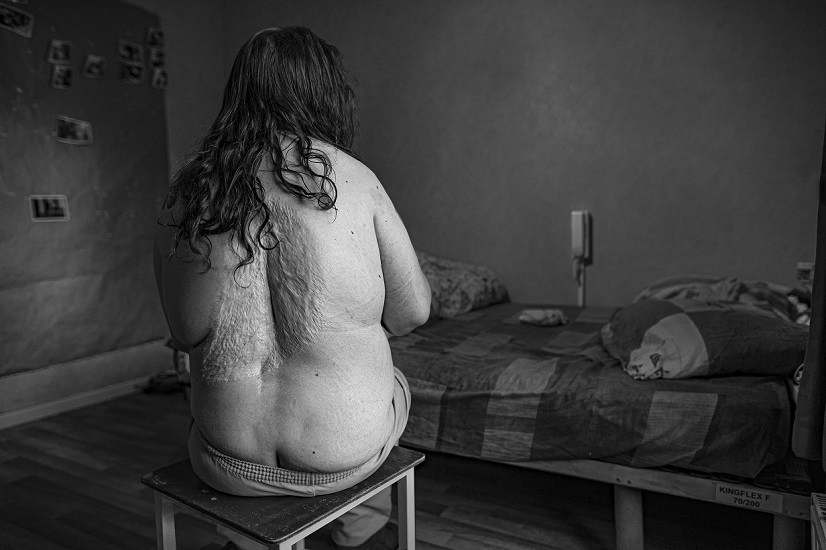The word euthanasia stems from ancient Greek meaning “good death”. The first usage of the term is attributed to historian Suetonius, who described how Emperor Augustus, who "died quickly and without suffering in the arms of his wife, Livia, experienced the 'euthanasia' he had wished for."
In the 17th century, philosopher Francis Bacon saw euthanasia as an “easy, painless death, whereby it is the physician's responsibility to alleviate the 'physical sufferings' of the body. An act of compassion, if you will?”
In 2002, Belgium became the second country in the world, after the Netherlands, to legalise euthanasia, also known as “physician-assisted dying”. Only a handful of other countries such as Luxemburg, South Korea, and Canada have since then also decriminalised active euthanasia under certain conditions.
Passive euthanasia, on the other hand, is considered a somewhat more tolerated practice in more countries, such as the UK, India and Sweden. This form of euthanasia is brought about by an omission or withdrawal of treatment necessary to keep the patient alive.
Whether it is active or passive, the topic of euthanasia in Belgium remains widely debated and controversial ever since it was legalised.
The path to euthanasia
The underlying legal conditions for active euthanasia in Belgium stipulate that there must be – as a result of a serious or incurable medical condition or accident – persistent, unbearable physical or psychological suffering with no hope of improvement.

The pain scale is a clinically validated pain measuring device to capture the pain experienced. The patient is asked to indicate (left) her or his pain level. The reverse side (right) provides a numerical reading of that experience. Claire has a constant pain in her right foot (around 5) and very frequently this will increase to 8.3. At that point the pain becomes unbearable. Claire compares the intensity with a hammer landing on an avil in full force, again and again. At that point she wishes she were dead.
The request for euthanasia must be made in writing repeatedly (at least twice), be voluntary and well-considered and free from any external pressure. Finally, euthanasia may only be performed by a physician and the applicant must be of legal age and compos mentis.
In other words, the applicant must be well aware of his or her situation, the remaining treatment options and prognosis. A physician will evaluate the applicant’s medical outlook in terms of prognosis and chance for improvement. The degree of unbearable suffering and despair and the wish to end one’s life resides with the applicant. However, he or she must convince the physician of the direness of the situation and the wish for euthanasia.
In a second step, the attending physician must consult a colleague (a “LEIF doctor”) who will also engage in dialogue with the applicant. A LEIF doctor is a trained physician specialised in all aspects related to euthanasia and palliative care in Belgium.

Claire enjoys swimming as it eases the pain. However, going in and out of the pool requires a tremendous effort and resistance to pain, to the point that she needs the assistance of social workers.
However, the applicant and attending physician are under no obligation to follow the conclusions of the latter. For example, if the consulted physician believes that there are still other options such as palliative care, the applicant may reject this assessment and still apply for euthanasia.
It is within the attending physician’s remit to comply with the applicant’s request. In case of euthanasia requests by non-terminally ill patients, as is the case for example in the context of an incurable mental illness which causes unbearable suffering, a third physician such as a LEIF doctor, a psychiatrist or another medical specialist must also be consulted. Following that, a waiting period of one month goes into effect between the final written request for euthanasia and the lethal injection.
Dr. Michel Roland, euthanasia physician (LEIF) in Brussels and member of the Association Pour le Droit de Mourir Dans la Dignité (association for the right to die with dignity), explains how euthanasia has changed over the last 40 years from a clandestine, but humane way of ending one’s life, to a legal framework which offers the possibility of a dignified farewell in all openness and without legal repercussions for the attending physician or the family of the patient.
Last year, the Belgian Euthanasia Commission recorded 2,655 cases, representing a 12.6% increase from 2018. According to the commission, this increase appears mostly related to cancer patients and could be explained by the fact that physicians are more willing to talk about euthanasia in this context.
Statistics show that most euthanasia patients are between the ages of 60 to 89. 1.5% are younger than 40. The majority of euthanasia requests are made by terminally ill patients. About 44% of all euthanasia cases were performed at home, 40 % in a medical facility, and 16% were done in care and nursing homes.
Claire’s story
And then there is the case of Claire. I met Claire, then 33 years old, in the summer of 2016. Claire a wheelchair-bound woman, suffering from a constant, severely debilitating pain in her right foot, epilepsy and spastic quadriplegia – a form of spastic cerebral palsy.
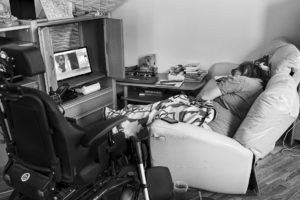
Every day is a struggle: fighting the pain, getting from one point to another, getting drugged up on pain medication, is exhausting.
Since the age of six, her life has been marked by a series of almost fatal accidents, invasive operations, strong painkillers and ultimately a wish to end her life. A simple fall from her bicycle at age six and a severe car accident several years later determined how the rest of her life would unfold, ultimately leading to a wish to end it. Nevertheless, she remains hopeful, owns an apartment, hosts refugees, travels the globe, and is a theatre performer.
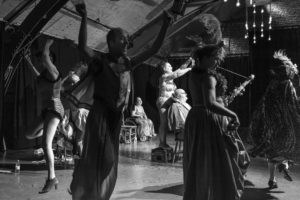
Claire performing with the theatre group she is part of. The play is called the Great Sextacle and its central theme is about sexual diversity, gender equality and the demystification of sex in general. Impaired people are often viewed as a-sexual. Although this is far from the truth, finding a partner is no easy feat. In Belgium, impaired people have access to specialised professional sexual services. Here we see Claire with her male lover who she actually met by chance.
Ever since the pain in her foot began in 2012, she has been seeking a diagnosis and an effective treatment, as medical specialists could not find anything physically wrong. They attributed the pain to past trauma and referred her to mental health care as a last resort.
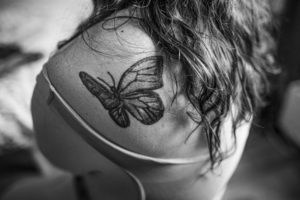
The butterfly symbolises transformation: reaching the next level of existence, even beyond the realm of the living. Claire is very much a free-thinker, not afraid to ask herself the difficult questions in life.
In January 2017, Claire was ready to throw in the towel, but one physician took up her case once more. He anesthetised locally the main nerve in her leg to see whether the pain was “real”.
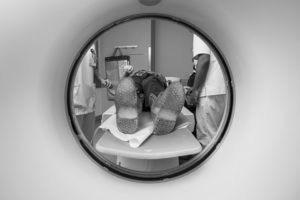
Ever since the pains in her foot started in 2012, she has been seeking a diagnosis and an effective treatment. In 2017, one physician took up her case again. His intervention revealed the pain to be the result of nerve damage and thus real, most likely due to the invasive operations to treat her spastic quadriplegia.
The intervention revealed that the pain might be the result of nerve damage, most likely due to the invasive operations to treat her spastic quadriplegia following the bicycle accident back when she was still a little girl. This discovery cleared the way for a spinal neurostimulator implant with a price tag of 20,000 euro, in the autumn of 2017. Initially, the procedure appeared to be a success, but a few weeks later, the pain reoccurred.

Claire was fully conscious during the intervention as the effect needed to be tested for maximum efficiency.
Last year, Claire committed herself to rehab to treat the morphine addiction. Years of using morphine-based painkillers to ease the pain was taking its toll in terms of her overall health and their analgesic effect.
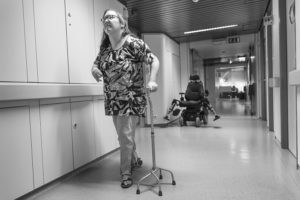
Initially, the operation was a success. She was able to walk again. A few weeks later however, the pains returned. This year, during the corona outbreak, Claire needed emergency surgery to remove the implant. It had caused a severe bacterial infection. The pains are back in full force. It seems all hope for any improvment to deal with the pain has run its course.
Beginning this year, Claire started to suffer from additional physical complications. Following a serious bacterial infection, the subdermal neurostimulator and the surrounding necrotic tissue had to be surgically removed. Since then, the pain in her foot has returned in full force.
Prior to this operation, Claire officially renewed her wish for euthanasia (Déclaration anticipée relative à l'euthanasie / Formulier van wilsverklaring inzake euthanasie) by filling out the legally required documents; the first step towards euthanasia.
Claire drew up her last will and is committed to finalising her memoirs. During my most recent interview with her this August, she told me that she holds on to life until this photo documentary book which we both started four years ago is completed and published.
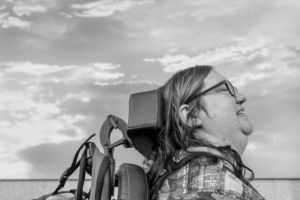
Regardless of her condition and her wish for euthanasia, Claire continues to embrace life to its fullest. Here, Claire is travelling on her own to Marrakech.
Claire appears to have decided to take the last and final step. She does not see herself reaching forty. For her, euthanasia is the right to decide whether she lives or dies. It must be by all means a conscious choice. A decision which is not biased by some form of depression, and only performed after all possible options to alleviate her suffering have been explored.
She does not believe there is anything noble through endless suffering. Within the same sentence, she tells me that it will be an inherently selfish act, very painful for her family, as they will lose a child, a sister, and an aunt. As she puts it, there is not even a word such as orphan or widow to denote the loss of a child. Nevertheless, she still considers it her life, her suffering, her decision, and her release.
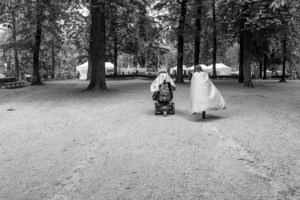
Suffering from severe pain and holding on to life, is considered by some as fulfilling God's will and praised as a strength of character. Claire does not share this belief. She rejects this kind of reasoning by those in a privileged position and enjoying full health while blinded by religious dogma.
This photo documentary, a portrait of Claire C, sheds a light on living with impairment and pain. It is also a testament to freedom and the courage to find a solution regardless of the moral indictments.
It sets out to document that euthanasia, contrary to suicide, is not triggered by a severe depressive state. It is a conscious decision and a deeply human journey, on which the dichotomy of right and wrong must make way for compassion and hope.
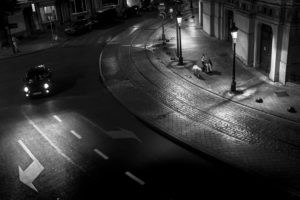
Last year Claire renewed her request for euthanasia. All legal requirements have been met. This gives her some peace of mind. Although she is back to where she started.
The photos and the settings in which they are taken, are at times confrontational, private and delicate; inviting Claire to revisit an old trauma, challenging her beliefs about love, life and death, and redefining her relationship with her parents and friends.
As a photographer and psychologist, it has been not always possible to merely observe from the sideline. Ultimately, and ideally, this body of work will contribute to the discussion on euthanasia; conveying a message of hope instead of despair. In Claire’s words, this entire journey is “an act of liberation”.
Text and photos by Michel Petillo

